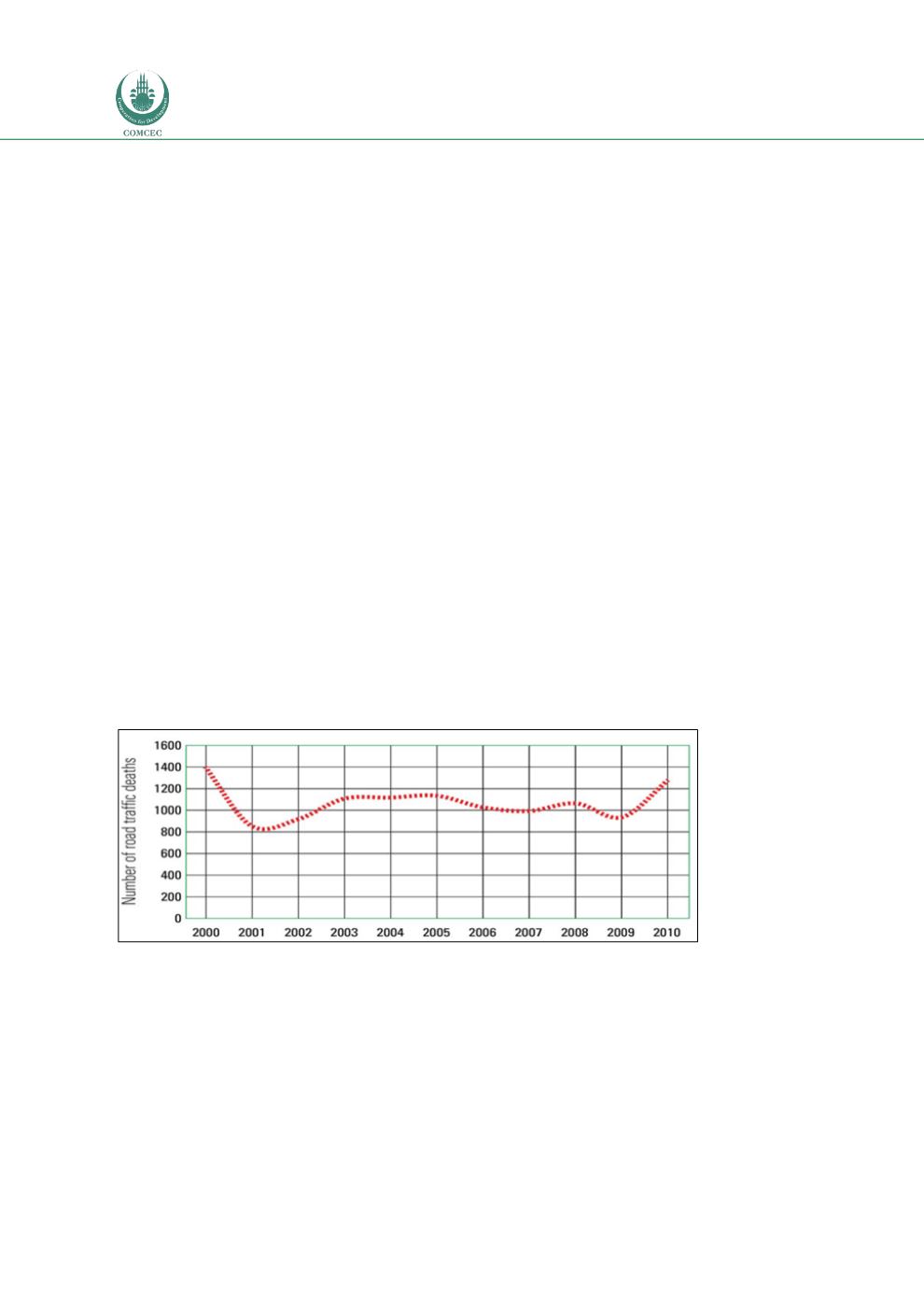

Improving Road Safety
in the OIC Member States
102
Police and Ministry of Health, has commissioned a consortium led by the University of Rome, to
establish a new crash reporting and recording system in the country. This includes the supply
of supporting hardware and software, training, support, etc. The system is expected to be fully
commissioned by 2018.
Registered fatalities and injuries, historical development
The number of police recorded crash reports in Cameroon are not a stable time series. This is
the result of varying reporting and recording rates, both by the National Police and Gendarmerie.
It is also known that crashes involving motorcyclists (especially taxis) are seldom reported,
primarily because the majority of these operators are not insured and do not comply with legal
requirements to operate as a taxi. Crashes involving pedestrians and cyclists are reputedly also
under-reported adding to the degree of under-registration. Furthermore, the number of
recorded fatalities are based on persons killed within 7 days from a road accident occurring.
This definition of a traffic fatality differs from the WHO norm of 30 days. The most recent WHO
report on road safety (World Health Organisation, 2015) estimates the number of road deaths
in Cameroon to be between 5 035 and 7 236 in 2013. Given the population and income levels,
this number is in agreement with what can be expected from the general relation between per
capita GNP and mortality.
Historic data (National Transit Bureau) reveal that the number of registered road traffic deaths
fluctuates around the 1100 fatalities per year with some peaks and valleys including a sharp
increase in 2010 (Luca Persia et al., 2015). The registration rate and influence thereof is
unknown, but likely to be at most 20% given the WHO estimates.
Figure 15: Development of registered traffic fatalities
Source: National Transit Bureau, 2010
High risk categories and prevalent crash types
A set of crash data covering the period 2008 to 2016 were made available to SWOV for analysis
as part of the new crash registration systemproject led by the University of Rome. Unfortunately
these data are incomplete and it is unknown what proportion of crashes have been reported and
recorded in this dataset. The data show that records for 2008 and 2009 are the most complete
but after that the recorded crash numbers are a fraction of what is estimated by the WHO and
significantly less than reported by the Ministry of Transport (see Figure 14).
















